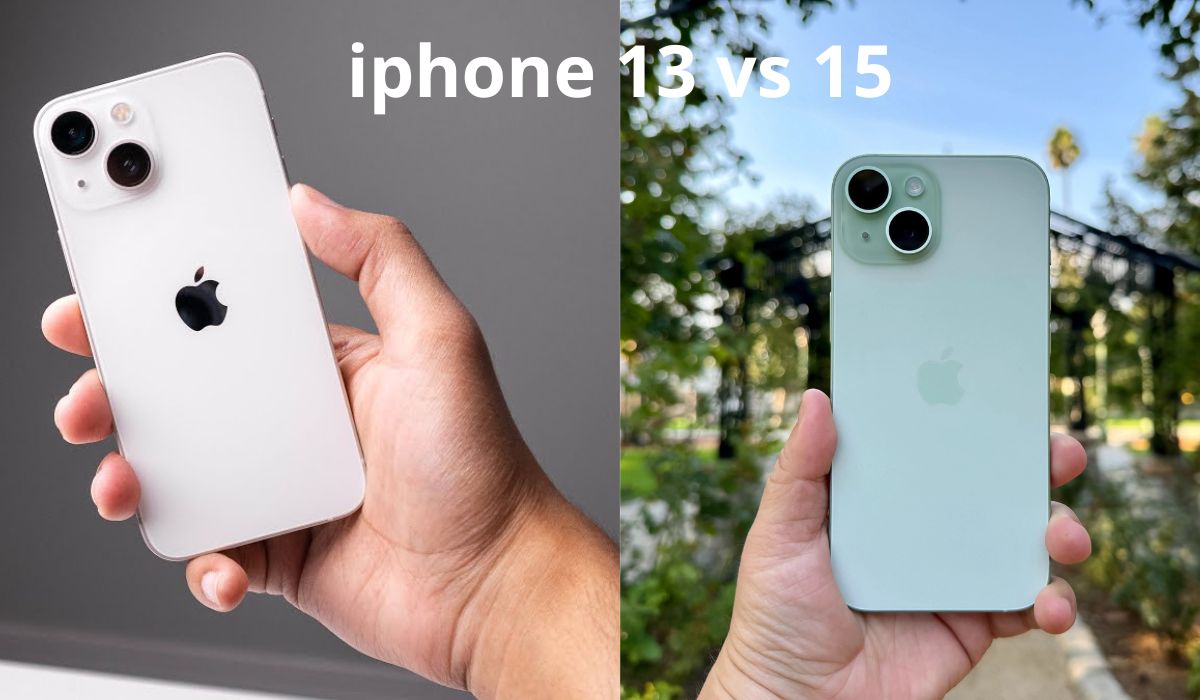To assess whether to upgrade from iPhone 13 to iPhone 15 involves more than jotting new features down. This comparison lists important variations so one can decide whether an upgrade would be beneficial for their day-to-day life.
Design and Build Quality
The profile of the iPhone 13 and 15 remains flat-edged, clad in the glass back; however, with the iPhone 15, refinement is provided. Slightly reduced bezels and the Pro models have a titanium-alloy frame for improved drop resistance instead of aluminum.
The color scheme also changes: the iPhone 13 is bolder in its colors, while the soft pastels and deep forest green are a design hallmark of the iPhone 15. These refinements provide subtle changeability rather than a complete design overhaul.
Processor Performance
Both devices run smoothly, but under heavier loads, the A17 Pro chip of the iPhone 15 Pro outperforms the A15 Bionic of the iPhone 13. Benchmarks show almost a 20 percent gain in single-core speeds and over a 30 percent improvement in graphics rendering in favor of the new model.
Game levels load quicker, and video exports are faster. Internet surfing, chatting, and streaming are perfectly managed between the two phones. However, there is an edge of buffer over the iPhone 15 Pro for processing-hungry applications.
Camera Performance Comparison
Basic models of both generations sport dual-lens arrays; Pros add telephoto sensors. In low-light situations, the iPhone 15 Pro is better when it comes to light input with less noise, making portrait edges appear sharper and ProRAW files to resolve even the minutest detail in highlights.
A new Action mode provides stabilization for handheld video without third-party gimbals. The improvements on the iPhone 13 Pro vs. iPhone 15 Pro in shooting warrant it if you are one who heavily relies on mobile photography or videography.
Battery Life and Charging Capabilities
Independent control tests show that the iPhone 15 surpasses the iPhone 13 by a mere two hours during continuous video-play tests.
This advantage springs from both the efficiency of A17 Pro and a slight increase in battery cell size. Both models support MagSafe charging and wired fast charge of up to 20 watts, while in the case of the iPhone 15, this capability supports USB-C for the vast majority of chargers. For anyone feeling troubled by power dwindling during the day, this increase in hours and a universal port may sway them one way or another.
Software Updates and Features Availability
Apple gives six to seven years of major iOS updates to any relevant hardware. Both models, the iPhone 13 and iPhone 15, on sale come loaded with iOS 17, though with the former, certain improvements are exclusive to the newer machine.
Improved crash detection, extended haptic feedback, and camera functions dependent on hardware will be offered only in the iPhone 15. Provided that the early benefits of any features are significant to you, the newer model is favored because of the increased hardware-enabled update runway.
Storage Configurations and Pricing Structure
The introductory price of the iPhone 13 Pro was set at $999 for 128 GB, while that for the iPhone 15 Pro is slightly higher in USD at $1,049 for the same storage configuration. The prices for the standard versions are $699 and $799, respectively.
Between-the-lines translations tell us that a capacity hike, whether 512 GB or 1 TB, is likely to cost about $100-150 more above the base prices. The iPhone 13 garners trade-in values usually in the range of $300-$400, and so it eases the iPhone 15 sticker shock. The additional storage forms part of an important consideration for how this price difference will affect your wallet, along with the trade-in value estimates.
Connectivity And Network Support
The iPhone 15 Pro comes with USB Type-C cables, as well as Wi-Fi 6E, which means that if the user has access to this technology, there will be wider frequency bands available and hence less interference from other devices.
Bluetooth 5.3 also greatly increases stability for audio applications but uses much less power. The last bastion is the emergency SOS calls via satellite for the newer lineup, reassuring mere mortals on faraway hills. While there may not be much visible gain in day-to-day network use, these updates allow users who overuse and roam to be much more reliable.
Evaluating Your Upgrade Decision
When contemplating, should I change to the iPhone 15? This becomes more of an exercise toward individual usage. Someone who does constant high-frame-rate gaming, mobile video editing, or even a lot of low-light photography will find the benefits offered to them by the iPhone 15 Pro worthwhile to retain.
For browsing, using social media, and messaging, the iPhone 13 remains absolutely valid. The USB-C and improved battery life could be perks of switching, but consider them against their cost and the condition of your current device.
Conclusion
Looking through the differences between the iPhone 13 and 15 indicates fairly solid upgrades in computing power, camera performance, battery life, and connectivity. Anyone power hungry will most probably find solid reasons to upgrade now.
For others, keeping the iPhone 13 longer might actually make more economic sense. Evaluating your own priorities- performance, camera, battery life, feature access- will lead you to the right decision.
